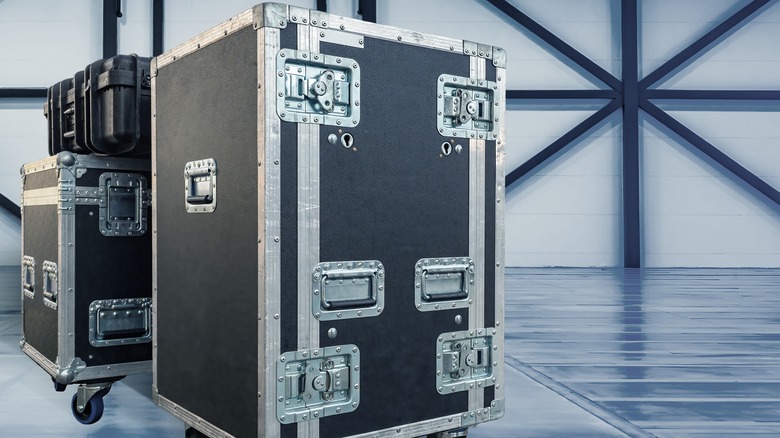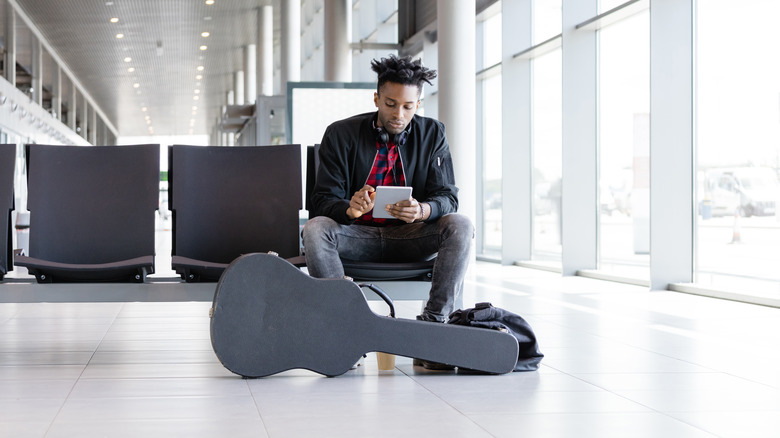Best Practices For Flying With Musical Instruments
If you're a musician or you often fly with one, you know that taking an instrument on a plane comes with a lot of issues. If you play the piccolo, you might be able to place it into your carry-on bag, but if it's something more fragile and larger, like a guitar, you could be in for a rough ride. Certain instruments just don't fit into the carry-on size guidelines for many airlines, and while you might get lucky with lots of overhead space on a flight, you also might not, given how quickly those bins fill up. In fact, you could even be asked to check the bag it's in. If you didn't prepare for that, or have a soft case, you're looking at hours of worry, and possibly a broken violin or bent trumpet.
There are some guidelines set out by the Department of Transportation (DOT), but they can be a little complicated. That doesn't mean you don't have options, though. We have the best practices for you on how to book the flight in the first place, packing your instrument, how some rules can be gotten around in certain situations, and what to do if you run into an issue or end up with a broken instrument.
Getting ready to fly with an instrument
Booking a flight with an instrument is challenging, and it's best to call the airline. They have rules on their websites (usually under optional services, customer service, or travel information), but speaking to a person is key. Inform the carrier you'll be bringing an instrument, and try for priority seating. Paying for early boarding may give you more of a chance to claim overhead space. So will booking off-peak or late-night flights. Some musicians purchase another seat for large instruments, but again, call first. Keep this link of DOT rules handy, as well as a link to your airline's rules.
Pick a non-stop flight so it only goes through one flight's worth of baggage handlers. Pack it in a hard case, even if you think you're taking it as a carry-on, mark it "fragile," put your contact info inside and out, and pad/insulate it well. Remember that temperature changes can affect instruments and the baggage area can be cold.
The DOT says airlines have a liability limit, which is — at the time of this writing — $3,400 for damage, loss, or delay domestically, with different rules for international compensation. It's a good idea to have personal insurance as well. At the airport, your instrument will be screened at security, so tell the agent if there are any instructions.
At the airport and what to do if there's an issue
You may be able to take your instrument as a carry-on, but if it's awkwardly shaped, you could have an issue. The DOT says if it fits in the bin or under the seat, it must be taken if there is room. If not, like any other piece of luggage that doesn't fit, it will be gate-checked. You're allowed to have a carry-on and a personal item that fits under the seat. If your instrument doesn't fit under the seat, your additional item must, so you may have to check your other bag.
If you get to your gate early enough (and TSA precheck can help avoid lines), you're more likely to find overhead bin room. On a packed flight, you might be out of luck. Being friendly to the gate agent can help as well. They may put it in the first class/priority area if there's room. In the end (as we recently found out on a flight), they have the final say if your issue isn't covered by the DOT rules.
That said, if something bad happens, you have recourse. The DOT recommends talking to the airline first — here is their list of airline complaint contact info by mail and email — which must address it in 30 days of receipt and respond in 60. If it's not solved, you can complain to the DOT.


